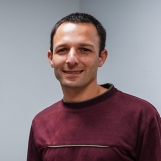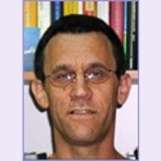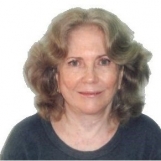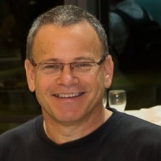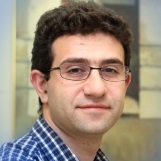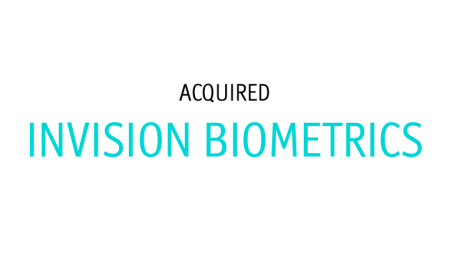3D Printed spacer fabrics (3DSF)
Knitted Spacer Fabrics (SF, AKA spacer mesh) have numerous uses in the fashion, automobile, safety industries, and more. Nevertheless, current SFs manufacturing suffers from some substantial limitations. The knitting machines are huge and very expensive, and the process requires a...
Categories:
Automation, Mobility and Aerospace|Chemistry and Materials|Information and Computer Science|Medical Devices
3D vision utilizing single lens camera
In recent years, depth sensing has become essential for a variety of new significant applications. For example, depth sensors assist autonomous cars in navigation and in collision prevention. The physical constraints on active depth sensing mobile devices, such as light...
Categories:
Information and Computer Science
A novel memory structure in the CPU
SRAM is the commonly used memory technology in CPU. The low density and high static power limit the amount of data that can be stored in buffers, register files, and caches, just to name a few. This calls for new...
Categories:
Information and Computer Science|Physics and Electro-Optics
A system and method for live and recorded free-viewpoint video
As any lover of live sports events knows, user control of a video camera’s viewpoint can be a highly prized feature. Unfortunately, it is not feasible to allow each viewer to actively control his own robotic video camera from home....
Categories:
Information and Computer Science
Acoustic localization and mapping of multi-rotor vehicles
A self-localization system for multi rotor drones . Localization is based on analysis of acoustic signature of returned acoustic signals as a result resulting from reflections from nearby objects. The transmitted acoustic signal is derived from rotor rotation. Advantages Localization...
Categories:
Automation, Mobility and Aerospace|Information and Computer Science
Adaptive coded communication over heterogeneous networks
Big-Data revolution increases the demand for network connectivity, high data rates, ultra-low latencies, and resource-intensive computations that require efficient utilization of all possible resources. To meet this need there is a huge need for scalable adaptive coding-based solutions for advanced...
Categories:
Information and Computer Science
Assessment of uncertainty in deep neural nets predictions
Deep neural networks (DNN) are currently used in wide range of computer vision and image processing tasks. Adopting DNN-based techniques for safety-critical clinical applications, such as MRI analysis and reconstruction, in which results inform diagnostic, prognostic, and interventional decisions in...
Categories:
Information and Computer Science|Medical Devices
Atrial fibrillation prediction
Prediction algorithm for Atrial Fibrillation risk based on novel algorithms that provide earlier more robust detection of AF risk and events based on ECG signal analysis. The technology is based on novel methods for analysis of HRV (Heart rate variability)...
Categories:
Information and Computer Science|Medical Devices
Audio SNR improvement utilizing video analysis
This work deals with complex scenarios such as a ‘cocktail party’: multiple sound sources exist simultaneously in all modalities. This inhibits the interpretation of each source. Cross-modal analysis offers information beyond that extracted from individual modalities. Consider a camcorder having a...
Categories:
Information and Computer Science|Physics and Electro-Optics
Binarized neural networks
Deep Neural Networks (DNNs) have substantially pushed Artificial Intelligence (AI) limits in a wide range of tasks. Today, DNNs are almost exclusively trained on one or many very fast and power - hungry Graphic Processing Units (GPUs). In a training...
Categories:
Information and Computer Science
Bioconvergency: Molecule data storage systems and methods
DNA, due to its remarkable data density and long-term stability, is an appealing potential candidate component of next generation data storage systems, most notably for long term archiving applications. Large scale, high throughput, DNA synthesis technology is needed. However, current...
Categories:
Information and Computer Science|Security & Defense
CAD SYSTEMS - volumetric representation
The boundary representations (B-reps) that are spline based, have served as the geometric representation of choice for over five decades, in all commercial mechanical design (MCAD) systems. That said, the gap between design and modern (additive) manufacturing is expanding, due...
Categories:
Information and Computer Science
ClassifAI – Next-generation binary search technology
Packet steering is a fundamental function in network devices such as SmartNICs, switches and routers. The number of steering rules is proportional to the number of users. But TECHNOLOGY LAGS BEHIND. The present packet steering technology powering network-packet-processors is incapable...
Categories:
Information and Computer Science
Cloud BIM – collaborative platform for building professionals
The fragmented nature of the construction industry necessitates close collaboration among design disciplines and requires extensive data exchange. Despite advances in Building Information Modeling (BIM) technology, teams still rely on a sequential file-based process for design exchange, resulting in issues...
Categories:
Automation, Mobility and Aerospace|Information and Computer Science
Cloud HW - performance improvements in Disk and CPU
Large-scale storage systems are designed with redundancy to prevent data loss after a disk failure, often by replicating data. Redundancy is necessary since a large number of disks implies a short mean time to a single disk failure. Systems are...
Categories:
Information and Computer Science
CMOS ISFET sensitive detector
Ion sensitive field effect transistors (ISFET), are used to detect presence and concentrations of various species of ions in fluids into which they are placed. ISFETs have long been considered good candidates for providing small, fast, sensitive, accurate, and relatively...
Categories:
Information and Computer Science|Medical Devices
CMOS-SiPM array for ToF measurements
Ultra-sensitive light detection systems are increasingly being employed in applications such as mobile range finding, automotive ADAS (Advanced Driver Assistance Systems), gesture recognition, 3D mapping, security, etc. There is an increasing need for "Super-Camera" which is capable of producing two-dimensional and...
Categories:
Automation, Mobility and Aerospace|Information and Computer Science|Physics and Electro-Optics
Developers facing a programming task often look for readily available code snippets to be incorporated into their project. Such segments may be taken from publically-available projects, and in particular open source libraries and repositories, as well as from the user's...
Categories:
Information and Computer Science
Complex events processing in data streaming
Complex event processing (CEP) algorithms are widely employed in applications where arbitrarily complex patterns of data items must be promptly and efficiently detected in massive data streams. CEP algorithms treat data items as events, as new events are detected they...
Categories:
Information and Computer Science
Computer vision respiratory rate detection
Detection of breathing patterns and abnormalities utilizing a video camera. Analysis of video monitoring of chest movement during breathing provides data regarding the beating pattern and enables rapid response to changes. Advantages Detection of apnea, bradypnea, eupnea and tachypnea No...
Categories:
Information and Computer Science|Medical Devices
Information in certain memory cells, such as NAND Flash, is expressed as a charge level in a capacitive cell, which in turn determines a voltage threshold for opening a related transistor gate. Unfortunately, through stray capacitance, the charge in one...
Categories:
Information and Computer Science
Construction of 3D Trusses via sphere packing
Truss lattices are common in a wide variety of engineering applications, due to their high ratio of strength versus relative density. They are used both as the interior support for other structures, and as structures on their own. Using 3D sphere...
Categories:
Information and Computer Science
Speculative execution is a technique used by modern processors with out of order architecture to speed up performances, where the processor may execute some tasks ahead of time before it is known whether these tasks are actually needed. When the...
Categories:
Information and Computer Science
Data-flow analysis pipeline
Traceability, reproducibility, transparency and efficiency are becoming increasingly important in the data analysis pipelines underlying today’s data-rich biomedical research. These analysis pipelines are typically composed of multiple steps, where raw data is hierarchically transformed into simpler, and gradually more insightful,...
Categories:
Information and Computer Science
Large datasets play a vital role, particularly in modern AI applications. To ensure efficient query processing and minimize disk access, advanced query optimization capabilities are necessary. The containment rate measures the percentage of result tuples from query Q1 that are...
Categories:
Information and Computer Science
Decision making under uncertain conditions
A system and methods are provided for decision making under uncertainty, for selecting an optimal action from among multiple candidate actions in belief space planning (BSP). BSP is a scalable approach for planning under uncertainty. Today, the two processes, inference...
Categories:
Automation, Mobility and Aerospace|Information and Computer Science
Deep learning of robotic tasks using strong and weak human supervision
Consider the task of designing a robot capable of performing a complex human task such as dishwashing, driving or clothes ironing. Although natural for adult humans, designing a hard-coded algorithm for such a robot can be a daunting challenge. Difficulties...
Categories:
Information and Computer Science
Displays from space using swarms of nanosatellites
Nano-satellites for forming signs enable easy display of changing signs over different territories and time windows. Known solutions require large satellites and expensive deployment mechanisms and resources. This technology deploys an array of nanosatellites for display forming which allow for...
Categories:
Automation, Mobility and Aerospace|Information and Computer Science
Distributed cloud computing elasticity
One of the important concepts behind the adoption of cloud computing is the Pay-As-You-Go model. In this model, which is currently in use by major cloud providers such as Amazon EC2 and Microsoft Azure, service providers pay only for allocated...
Categories:
Information and Computer Science
While biological systems are inherently fuzzy and contain imprecise parts that collectively interact, synthetic computation in living cells is mostly inspired by precise computer engineering principles. Lab research demonstrated that neuromorphic synthetic genetic circuits can be engineered in living cells,...
Categories:
Chemistry and Materials|Information and Computer Science
Edge-state based actuation in ferroelectric field effect transistors
One of the holy grails for the microelectronic industry is to continue device miniaturization in order to increase the operation speed of the device (clock speed) and to pack more devices to reduce the fabrication cost. Therefore, many efforts are...
Categories:
Chemistry and Materials|Information and Computer Science|Physics and Electro-Optics
Electronic encyclopedia for enriching document representation for information retrieval tasks
Computerized categorization of text documents has many real world applications. One example is enabling a computer to filter email messages by detecting the messages that are relevant to the categories of interest to the receiver. Another example is news or...
Categories:
Information and Computer Science
Extreme dimensionality reduction of network training dynamics
Training neural-networks is a highly demanding process, with respect to computational resources and time. Moreover, updating trained networks in deployment with new data is costly and may reduce the overall performance of the network (e.g. due to “catastrophic forgetting”). As...
Categories:
Information and Computer Science
Fast training for very large NN
Modern deep neural networks are comprised of millions of parameters which require massive amounts of data and time to train. Steady growth along the years has led these networks to a point where it takes too long to train a...
Categories:
Information and Computer Science
Fundamental component of modern hardware security
Emerging nanoelectronic memristive technologies promise to provide an alternative to the ubiquitous CMOS technology. CMOS compatibility, along with a combination of properties such as non-linearity, non-volatility and sensitivity to process variations, make this technology appealing for embedded security applications. The...
Categories:
Information and Computer Science|Physics and Electro-Optics
Holographic multi-image printing
During the last years various engraving devices have been developed. These systems are easy to transport for use at events and trade shows, facilitating on the fly manufacturing of engraved objects according to received images. The technology is based on...
Categories:
Information and Computer Science
Image compression and active acquisition using deep posterior sampling
Signals compression or active acquisition can be very heavy data transmitting processes. By taking advantage of recently discovered generative AI capabilities (and specifically diffusion models), our technology enables a computational process for discovering an optimized set of measurements for obtaining...
Categories:
Information and Computer Science|Security & Defense
Improving clarity of images taken under turbid medium conditions
The present invention relates to systems and methods for photographing an in a scattering medium such as water, fog or biological tissues. A wide range of imaging domains exists in scattering media. Several studies improved visibility in such media under...
Categories:
Automation, Mobility and Aerospace|Information and Computer Science|Physics and Electro-Optics|Security & Defense
In-memory computing in emerging memory technologies
Conventional computer architecture (von Neumann architecture) is based on a separation between the computation (i.e., CPU) and the storage (i.e., memory). This architecture is simple and widely used, but is problematic for memory-intensive application due to the need to read...
Categories:
Information and Computer Science
Incremental physical data clustering
XML is becoming widely used as a primary encoding scheme for data and knowledge. The number of applications based on XML grows steadily. XML is also used extensively in encoding of databases (DB). The DB is practically stored as one...
Categories:
Information and Computer Science
A channel distribution system has a channel carrying content, and an interactive receiver which receives content and provides to a user. The interactive receiver has an interface to allow the user to interact with the content. The channel also includes...
Categories:
Information and Computer Science
Machine learning and data mining
Semantic relatedness (SR) is about quantification of the intensity of how much two objects are related to each other. Most automatic SR valuation techniques rely on some kind of world or expert knowledge, which we term background knowledge. The technology...
Categories:
Information and Computer Science
Matrix multiplication on large data structure
Machine learning algorithms performed on High Performance Computers (HPC) address complex challenges. These problems are plagued by exponentially growing datasets and pose a major challenge to HPC architects as they cannot be adequately addressed by simply adding more parallel processing....
Categories:
Information and Computer Science
MELoDee - multi-exponential model learning based on deep neural networks
The present technology offers a machine-learning solution to the problem of fitting multi-exponential models to observed data. The multi-exponential fitting problem appears in various science and engineering applications, such as nuclear magnetic resonance spectroscopy, lattice quantum chromodynamics, pharmaceutics and chemical...
Categories:
Information and Computer Science
Memory swapper for virtualized environments
The main enabling technology for cloud computing is machine virtualization, which abstracts the rigid physical infrastructure and turns it into soft components that may be easily managed and used. Clouds and virtualization are driven by strong economical incentives, notably the...
Categories:
Information and Computer Science
Memristors based neural networks and neuromorphic computing
The impending end of Moore’s law and Dennard's scaling require rethinking the way computing is performed. Thus, several neuro-inspired architectures have been proposed, shifting the spotlight from the traditional von Neumann paradigm to neuromorphic computing. To implement this new paradigm,...
Categories:
Information and Computer Science
Message authentication based on physical location on a bus
Researcher:
Prof. Eli Biham
With the ever evolving connectivity and functionality of devices, systems, infrastructures and/or the like, cyber-attacks and cyber threats may present a major and ever growing security concern for multiple networks, systems and infrastructures. Potential malicious attackers may penetrate a network...
Categories:
Automation, Mobility and Aerospace|Information and Computer Science
Method and systems of geometric deformation
During the last years, numerous graphics applications have been developed, for example for image deformation, such as “warping” or “morphing” in which one image gradually transformed into another image. This is accomplished by creating a smooth transitional link between the...
Categories:
Information and Computer Science
AI based Optimization scheme for MIMO /Array RADAR systems reducing complexity and cost by optimizing antenna and transmitter/ Receiver topology and reducing the overall number of Transmitting/ Receiving blocks. Advantages Cost and power reduction of RADAR systems Size reduction Applications...
Categories:
Automation, Mobility and Aerospace|Information and Computer Science
Minimum maximal level programming
Writing to NAND Flash memory is much slower than reading. Also, writing to a cell increases with an increase in the required increase to its charge level. Finally, since a full page is written concurrently, the writing time to a...
Categories:
Information and Computer Science
ML based lineage in databases
Data lineage (a type of provenance) consists of metadata added to the data in a database. It enables tracking down errors within the data and can also be used for justification for the existence of data in the database. Data...
Categories:
Information and Computer Science
Modulation techniques for optical and other networks
Cellular networks and fiber optic networks require higher data rates and improved latency. We offer technologies that include enhanced modulation schemes and their decoding techniques to facilitate the new requirements. For cellular CRAN application, to support high rates the technology...
Categories:
Information and Computer Science
Molecular profiling of cancer by analysis of tissue histomorphology
Deep learning-based method for mapping critical receptors on cancer cells. Using digital images of biopsies taken from breast cancer patients, the new technology is expected to significantly improve personalized cancer treatments. The technology extracts molecular information from biopsy images that...
Categories:
Information and Computer Science|Medical Devices
Multithreading memory flow
Multithreading processors have been used to improve performance in a single core for the past two decades. One low power and low complexity multithreading technique is Switch on Event multithreading (SOE MT), also known as coarse grain multithreading and block...
Categories:
Information and Computer Science
Many system designs begin as ad hoc sketches on the back of a napkin. These crude diagrams attest to the value of diagramming as a design tool. A relatively simple diagram can depict important interactions and relationships between different system...
Categories:
Information and Computer Science
Optical reconfigurable logic device
In last few years, there is a need for an optical reconfigurable logic device which enables to lay foundations for all-optical networking, wherein the optical packets are routed by ultra-fast smart all-optical switches as well as optical computing devices. The...
Categories:
Information and Computer Science|Physics and Electro-Optics
Optimization of virtual machines and HW CPU interface
Although modern systems include multiple components that need to access the disk, existing systems require that all file accesses be delegated to the operating system/hypervisor. This is due to the fact that only the operating system possesses the logical-to-physical mapping...
Categories:
Information and Computer Science
Outsmarting nonuniform DMA
In a multi-CPU server, memory modules are local to the CPU to which they are connected, forming a nonuniform memory access (NUMA) architecture. Because non-local accesses are slower than local accesses, the NUMA architecture might degrade application performance. Similar slowdowns...
Categories:
Information and Computer Science
3D scanners represent an object as a set (cloud) of points. Some of these points are not visible on the object from which they are sampled from a specific viewpoint. Hence, many computations involving these points are erroneous. Several methods...
Categories:
Information and Computer Science
Programming for electronic memories
Some Multi-Level-Cell memories suffer from nonlinearity in their switching mechanism (e.g., ReRAM). Using fixed programming pulses leads to a non-uniform level distribution and state-dependent programming which burdens the controller and demands a modified programming techniques. In order to deal with...
Categories:
Information and Computer Science|Physics and Electro-Optics
Proof of Lottery (PoL), efficient blockchain
Blockchain networks comprise a community of computing nodes constructed to manage and maintain blockchains and are deployed to facilitate distributed ledgers for a plurality of uses and applications. The distributed ledgers stored simultaneously by a plurality untested community members may...
Categories:
Information and Computer Science
Queries on social networks
A social network is a social structure made of units such as individuals or organizations, known as nodes which are connected via links representing friendship or the like, known as edges. Databases are used for data management of social network...
Categories:
Information and Computer Science
Reconstruction algorithms for DNA-storage systems
Technology A DNA storage system consists of three components: (i) DNA synthesis which produces the oligonucleotides, also called strands, that encode the data ; (ii) a storage container with compartments which stores the DNA strands, however without order ; (iii)...
Categories:
Information and Computer Science
Reinforcement learning of robotic control policies
Robots are expected to propagate over different terrains. There is a growing need to provide a method for controlling a movement of a robot that is robust, can allow the robot to propagate over terrains with positive and negative slopes,...
Categories:
Automation, Mobility and Aerospace|Information and Computer Science
In NAND Flash memory, one cannot selectively or incrementally reduce the charge levels. Therefore, if a page cannot be written to because the level of at least one of its cells must be reduced, a blank page is used and...
Categories:
Information and Computer Science
Reverse engineering of a VLSI device utilizing scan-chain
Reverse engineering of a VLSI device is usually a two-stage process, comprising (1) extraction of a circuit description from the physical device and (2) behavioral model extraction from the circuit description (usually algorithmic). The first stage, as a rule, involves...
Categories:
Information and Computer Science
RF circuits based on emerging memory technologies (memristors)
A large area of the main board in a communication device is occupied by RF chips from different vendors to support different standards. Reconfigurable RFICs are an attractive feature to sustain the increasing number of standards and frequency bands of...
Categories:
Information and Computer Science
RFIC Design for narrow separation FDD communication
A novel circuit design comprised of an Isolator which isolates TX-> RX signal and passes the TX signal to the ANT port with a -3dB loss. Tests done on actual chips has shown improved isolation compared to all known state...
Categories:
Information and Computer Science
RFIC for MIMO OFDM (5-7GHz)
RFIC implementation of a transceiver front end for various applications up to 28Ghz deploying CMOS technology Advantages Enhanced TX/RX isolation utilizing CMOS technology Low cost CMOS implementation Applications and Opportunities Wifi and cellular transceiver ICS
Categories:
Information and Computer Science|Physics and Electro-Optics
Road traffic forecasting system
Setting complex traffic light plans is a must as intersections are becoming more complicated and crowded. Current plans must take into account not only vehicles and pedestrians but also bicycles, public transportation of different types etc. The plans should provide...
Categories:
Automation, Mobility and Aerospace|Information and Computer Science
Room temperature quantum detectors for microwave photons
Quantum radar and quantum communication are new fields in which information is transmitted between two or more points by using single photons, referring to their quantum state (e.g., polarization, or phase) of each photon separately. In this way information can...
Categories:
Information and Computer Science|Physics and Electro-Optics|Security & Defense
Securing program execution
This invention addresses the need to provide security (confidentiality and integrity) to an application running on a computer that is controlled by an untrusted owner with an untrusted operating system and even hypervisor or virtual machine monitor. Only the CPU...
Categories:
Information and Computer Science
Self-correcting non-invasive brain computer interfaces
Non-invasive Brain Computer Interfaces (BCIs) measure electroencephalography (EEG) potentials from the scalp and interpret them, through signal processing and machine learning, to make decisions and operate computers or other external devices. However, practical applications of BCIs are hampered due to...
Categories:
Information and Computer Science|Medical Devices
Single input multiplexed decision system
Many applications of genetic or metabolic engineering require inducible expression of the desired pathway. Inducible promoters are one of the easiest and most effective ways to control gene expression. However, in a more sophisticated applications there is a need to...
Categories:
Chemistry and Materials|Information and Computer Science
Speculative early sensing
Reading NAND Flash, as well as some other types of memory cells, entails applying a reference voltage, waiting, and then sensing a certain voltage to determine whether then threshold voltage of the cell was higher or lower than the reference...
Categories:
Information and Computer Science
Sub-band separation in optical communication
Increasing throughputs in optical communication networks require more signal processing resources in the transceivers hardware. As a result, new signal processing schemes are required to handle the requirements. The technology includes digital oversampled filter banks for the first time in...
Categories:
Information and Computer Science
SURF - optimized data distribution system
In a hybrid cloud and multi-cloud environments, an enterprise employs a number of cloud data centers, which may be geographically distributed. The problem of where to place and replicate data and applications is complicated by multiple dynamically changing conditions. There...
Categories:
Information and Computer Science
Synthetic aperture imaging by distributed arrays of space telescopes
Long-range imaging is used across various disciplines, including astronomy, remote sensing and surveillance. Higher resolution requires larger aperture and lenses. This makes these systems expensive and cumbersome. A new method for synthetically expanding the aperture by acquiring multiple images of...
Categories:
Automation, Mobility and Aerospace|Information and Computer Science
Synthetic living medicine for gut inflammation (Crohn’s disease) diagnosis and treatment
By combining advanced synthetic biology and microbiome engineering, this technology harnesses genetically modified bacteria to both diagnose and treat gut inflammation, such as Crohn’s disease and ulcerative colitis. These engineered bacteria are designed to detect specific biomarkers of inflammation (e.g.,...
Categories:
Chemistry and Materials|Information and Computer Science
System and method for emulating quantization noise for a neural network
Training neural networks cannot be done with discrete values. The common solution is to approximate the quantized values with continuous ones which suffer accuracy degradation for extreme low precision especially for small models. The technology deals with training of low...
Categories:
Information and Computer Science
Systems and methods for ultrasonic imaging
Medical ultrasound is a wide-spread imaging modality due to its high temporal resolution, lack of harmful radiation and cost-effectiveness, which distinguishes it from other modalities such as MRI and CT. High temporal resolution is highly desired in additional to spatial...
Categories:
Information and Computer Science|Medical Devices
Tools to find similarity of various common procedures across compilers and versions
We address the problem of finding similar procedures in stripped binaries (computer machine language executable artifacts). Previous solutions cannot find similarity between binaries compiled with different compilers (compiler = translator from high-level programmer written source code to machine code), or...
Categories:
Information and Computer Science
Wearable multimodality haptic feedback device
Virtual and Augmented Reality (VR and AR) are rapidly evolving fields, with applications in multiple domains, from gaming to medicine. While the visual and auditory feedback provided have progressed greatly, accompanying devices for haptic feedback are still limited in their...
Categories:
Automation, Mobility and Aerospace|Information and Computer Science|Medical Devices
Wide scale terrestrial imaging of the sky
A variety of spaceborne and airborne instruments have been applied to spatio-angularly sample and image atmospheric radiance. These imaging architectures, however, have a spatial resolution of several Km/ pixel, an angular resolution of approximately 7 angles per view, and their...
Categories:
Automation, Mobility and Aerospace|Information and Computer Science|Physics and Electro-Optics
Write-once memory (WOM) code for efficient FLASH memory utilization
Flash based solid state disks (SSD) are widely used thanks to their short read and write latencies and increasing throughput. However, once flash cells are written upon, they must be erased before they can be rewritten. These comparatively slow erasures,...
Categories:
Information and Computer Science
Yield and production optimization of photonic integrated circuits
Photonic Integrated Circuits (PIC) have multiple relatively slow tuning degrees of freedom (DOF), that must be adjusted in order to stabilize the PICs to their optimum operating points. Methods are needed to perform this stabilization. Without such methods, large scale integration...
Categories:
Information and Computer Science

































